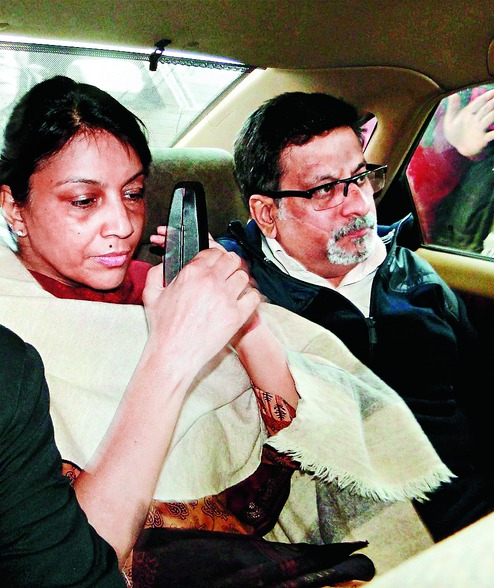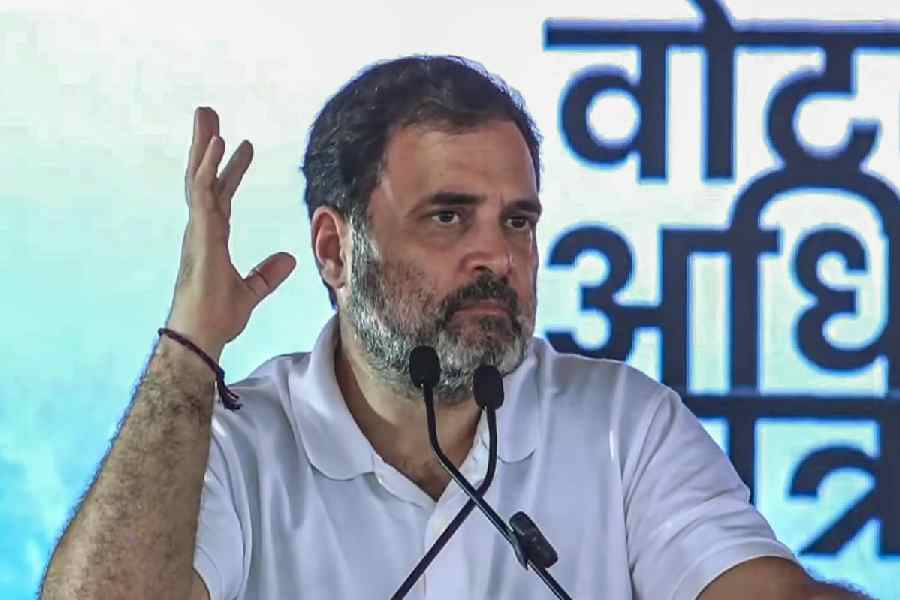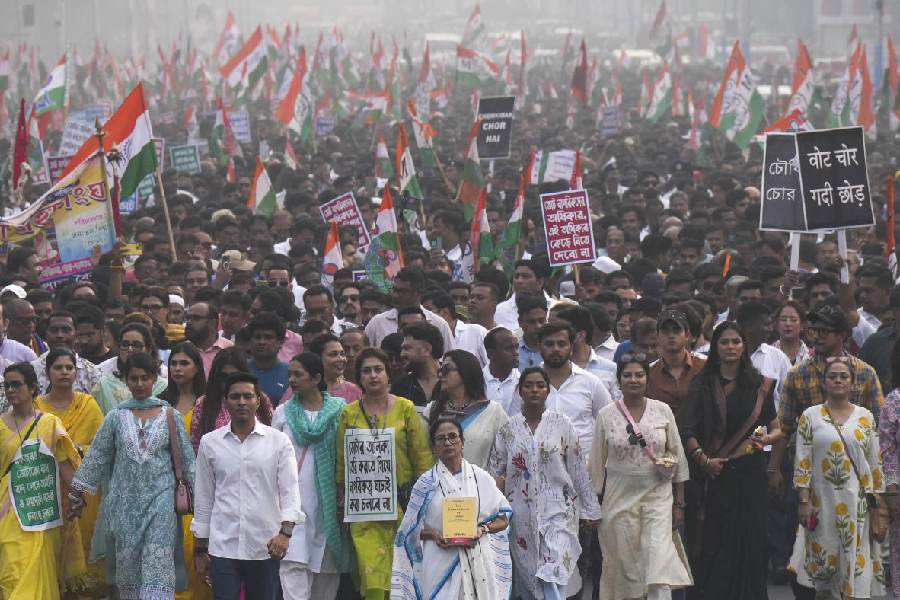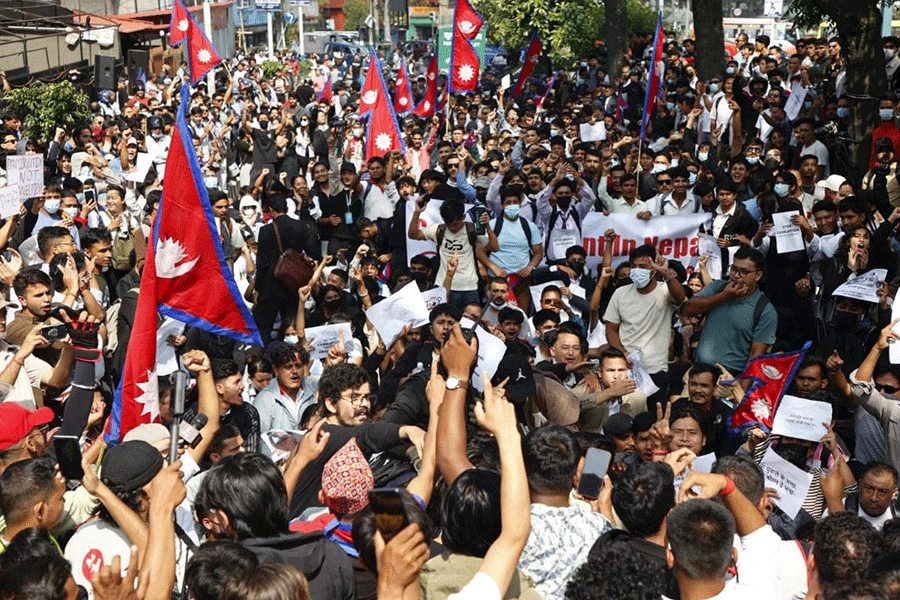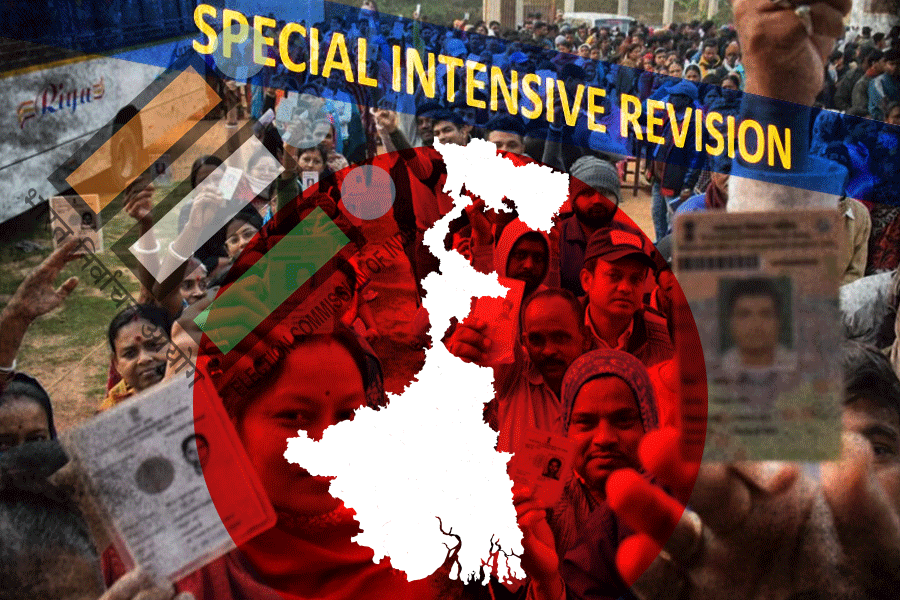
Lucknow, Oct. 13: A judge who made a "mockery of law" through "pick and choose" presumption of facts vitiated by "fallacious analogy" and "vitriolic reasoning". One who, like a "film director", followed his "fanciful whim" to create a "fictional animation of the incident".
That was Allahabad High Court's verdict yesterday on the judge who had tried the Aarushi Talwar murder case, convicting the teen's dentist parents Nupur and Rajesh on circumstantial evidence and handing them life terms in November 2013.
Justices B.K. Narayana and A.K. Mishra cited a catalogue of errors, missteps and far-fetched deductions by Shyam Lal, additional sessions judge of Ghaziabad, as they acquitted the couple of the May 2008 murders of Aarushi and domestic help Hemraj for lack of evidence.
The Talwars are likely to be freed from Dasna jail on Monday. They could not be released today because the court order had not reached the prison, while no official work can take place tomorrow because it is a second Saturday.
"The trial judge is supposed to be fair and transparent and should act as a man of ordinary prudence and should not stretch his imagination to infinity rendering the whole exercise (a) mockery of law," the 273-page high court verdict says. He "should exercise self-restraint from deliberately twisting facts in arbitrary manner".
Lal had "prejudged things in his own fashion, drawn conclusion(s) by embarking on erroneous analogy, conjecturing to the brim on apparent facts, telling a different story propelled by vitriolic reasoning," it adds.
According to the judgment, a copy of which was uploaded today, the Talwars deserved the benefit of the doubt because the circumstantial evidence against them was insufficient for a guilty verdict.
But "by dint of fallacious analogy and reasoning", the trial judge assumed a "fictional animation" of what had actually happened to provide a "live and colourful description of the incident", Justice Mishra says in his own 10-page view in the judgment.
"Like a film director, the trial judge tried to thrust coherence amongst facts inalienably scattered here and there but not giving any coherence to the idea as to what in fact happened."
The Talwars had found Aarushi, 14, with her throat slit in her bedroom in their Noida flat on May 15, 2008, morning. A blundering state police for a full day overlooked Hemraj's body, lying on the terrace, before claiming in an infamous news conference that Rajesh had killed both after finding them together in an "objectionable" position.
The botch-ups continued after the CBI took over - a vaginal swab proved fake while fingerprints were found "contaminated" - as did the somersaults.
The agency at first exonerated Rajesh and arrested three staff members of the Talwars, a friend and a neighbour before submitting a closure report to the trial court saying it suspected the parents but had no concrete evidence. But the court decided on a trial.
Justice Mishra writes that the trial judge was "unmindful" of the basic tenets of law and failed to realise that in circumstantial-evidence cases, "things cannot be presumed and stuffed in a manner like the present one by adhering to self-created postulates, then to roam inside the circle with all fanciful whim".
He says the trial court acted like a teacher solving a mathematical question by analogy after taking certain figures for granted. "In all criminal trials, analogies must be drawn and confined within the domain and realm of the evidence," he says.
"To base the entire reasoning solely on guesswork and give concrete shape to such assumption and then to construe facts and circumstances of the case falling in line with the evidence on record appears to be a futile attempt...."
Justice Mishra adds: "The trial judge, perhaps out of extra zeal and enthusiasm and on the basis of self-perception adopted partial and parochial approach in giving vent to his own emotional belief and conviction and thus tried to give concrete shape to his own imagination stripped of just evaluation of evidence and facts of this case."
He says the trial court judgment was, on the whole, a creation of "fanciful reasoning with pick-and-choose presuming (of) facts... basing conclusion on unfounded evidence".
Rejecting the suggestion that Rajesh had caught his daughter and Hemraj in an objectionable position, the high court says the prosecution has "miserably failed to prove by... an iota of legally admissible or cogent evidence the motive in this case".

